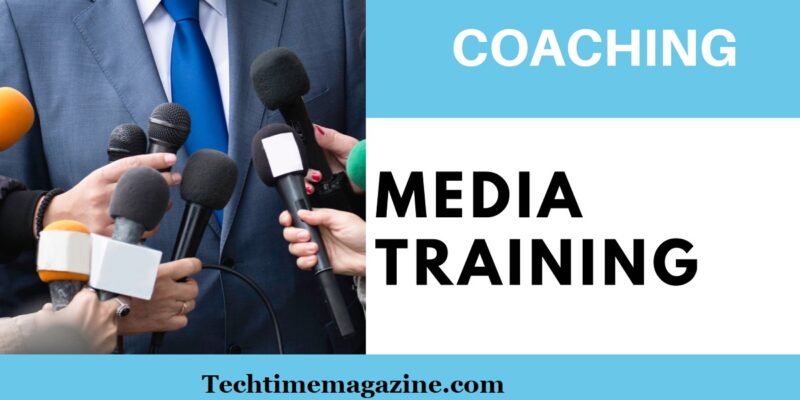Top 10 Tips on Media Coaching for Beginners and Media Training for Executives
Communicating effectively is essential in the fast-paced media environment of today. Developing your skills in media engagement may have a big impact on your public image and professional path, regardless of your experience level as an executive or entrepreneur. With a focus on media coaching for executives and novices alike, this extensive book offers crucial insights into the field, highlighting its significance and identifying its audiences. Together, we can enhance your proficiency in media and public speaking.
Media Coaching for Beginners
Let’s Take This Adventure Further:
How Does Media Training Work?
A specific type of communication coaching called media training equips people to communicate with journalists, do interviews, and assert themselves in public settings. It involves a variety of strategies, including controlling tone and body language and crafting concise, powerful messaging. Gaining expertise in media training enables you to professionally navigate the intricate media landscape.
Media Coaching for Beginners: 10 Tips
Media Coaching for Beginners – Beginners may find navigating the media landscape intimidating, but with the correct guidance, it can be a chance for development and clear communication. For individuals just getting started with media interactions, this section offers 10 crucial pointers. These guidelines aim to improve message delivery, establish confidence in a variety of media contexts, and develop fundamental abilities.
Determine Who Your Audience Is and What They Know:
Find out the hobbies and experiences of your audience. Your communication has more effect when you adjust your message to their tastes.
Make Your Communication Clear:
Divide complicated concepts into easier-to-understand chunks. Your audience will find it simpler to comprehend and recall your main ideas as a result.
Practice Frequently:
Set aside time to practice your speeches or presentations. Regular practice helps you become more confident and improves your speaking abilities.
Pay Attention to Your Body Language:
Incorporate affirming movements and facial expressions to enhance your spoken communication. Good body language improves your ability to communicate in general.
Learn How to Maintain Calm:
Study and put stress-reduction strategies into practice. Clear thought and a confident presentation are ensured when one remains composed under duress.
Adopt and Project Authenticity:
When communicating, be loyal to who you are. Authenticity fosters deeper connections with your audience and increases trust.
Be Ready for Any Questions That May Come Up:
Prepare your answers and consider any questions that could be posed to you. This preparation demonstrates expertise and preparedness.
Put Active Listening Into Practice:
Be sincere in your interest in the questions posed. Respect is shown and open communication is promoted by active listening.
Keep Your Main Message Front and Center:
Throughout talks, don’t forget to reiterate your major themes. This coherence aids in highlighting your main point.
Actively Seek and Use Input:
Ask mentors or peers for input, then apply it to your work to keep getting better. Feedback is essential for both personal and professional development.
The Top 10 Pointers on Media Training for Executives
Media Training For Executives focuses on preserving their brand and leading with influence in addition to communication skills. This section offers business executives 10 advanced techniques to improve their media involvement abilities. These tactics center on telling stories that captivate audiences, managing tricky circumstances, and keeping a powerful executive presence across all media channels.
Create an Engaging Brand Story:
Write a narrative that is consistent with the goals and values of your brand. An engaging story evokes strong feelings in your viewers.
Manage Talks Strategically:
Lead conversations to highlight your main points. Having agenda control aids in producing the intended results.
Plan How to Respond to Difficult Questions:
Get strategies ready for challenging questions. This planning aids in keeping control and calm in stressful situations.
Include Statistics That Are Relevant In effect:
Utilize evidence to back up your claims. Useful data gives your ideas more weight and believability.
Develop Your Nonverbal Communication Skills:
Make sure your words and body language make sense. In persuasive communication, nonverbal clues are crucial.
Acquire Bridge-Building Skills:
Gain the ability to reroute discussions back to your primary ideas. Bridging aids in keeping your agenda in focus.
Be Ready for Emergencies:
Create a plan for handling crises. Maintaining your brand’s reputation means being ready for everything.
Recognize and Follow Media Ethics:
Acquaint yourself with the moral guidelines for dealing with the media. Ethical behavior builds credibility and trust.
Match Individual Branding to Company Image:
Make sure your corporate role is reflected in your personal brand. Maintaining a consistent brand enhances your professional reputation.
Make a Commitment to lifelong learning:
Keep up on the most recent methods and trends in media. Maintaining efficacy and relevance in media interactions requires ongoing learning.














Comments